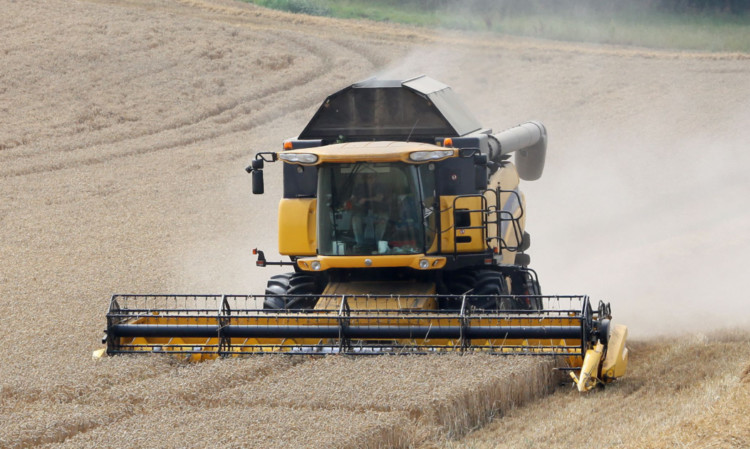Global grain stocks may well have been partly rebuilt thanks to a bumper 2013 harvest, but that need not mean weak prices this year, according to Julian Bell, senior consultant with SRUC, Scotland’s Rural College.
He told a joint SRUC and Home Grain Cereals Authority meeting in Perth that it would take another very good harvest to bring prices down much further, and until that happened markets would remain on edge.
The reason for the nervousness was the increased demand for all types of grain.
Last year’s global harvest of nearly two billion tonnes was a record, and the 200 million tonne (mt) increase over the previous year was the biggest annual uplift ever.
Despite that, the critical stocks-to-use ratio had hardly moved over a four-year period and was now around 20.9%. In other words, try as they might, the world’s cereal growers are only just keeping up with demand.
However, prices had taken a knock, particularly as regards feed grain.
A massive US maize crop had caused an £80 per tonne drop at the commodity level.
“Fortunately for our farmers we haven’t quite seen that. Wheat prices have held up, partly because of a poor wheat crop here and partly because export customers such as Egypt are taking the opportunity to stock up,” Mr Bell said.
The demand for grain for use as animal feed had also increased, with lower prices encouraging use.
Ethanol demand had, if anything, eased, but Mr Bell noted the huge growth in demand for crops as feedstocks for biogas plants, particularly in Germany. He reckoned this alone could account for a 2mt reduction in German wheat production this year.
Wheat production in the UK had been fairly dire last year, mainly because it had been impossible to establish sufficient crop in the rain-soaked autumn of 2012.
This had increased the price locally, but at the same time made home-produced wheat look expensive compared to French maize.
This led some distillers to switch to maize for spirit production, much to the alarm of growers and merchants.
However, Mr Bell was confident the markets would sort out this position this year, with UK wheat once again becoming competitive.
This depended on a good harvest this year, and so far the indications were that this was likely.
Over-wintered crops looked well across the UK, and the area sown was back to normal.
Mr Bell predicted that unless the weather took a turn for the worse the UK crop could reach 16.8mt. This compared with 11.9mt last year, 13.2 mt in 2012 and 15.25mt in 2011. It would turn the UK back into being a wheat exporter, with 2.8mt available for shipping.
Scottish wheat, with its proximity to the distillers, would retain a premium but it was likely to be around £6 per tonne rather than the £11 per tonne which had been available for the 2013 crop.
The good autumn had led to a return to normal sowing patterns, with Mr Bell estimating a 41% increase in the UK wheat area and a 37% reduction in spring barley.
The Scottish spring barley area, which had soared to 290,000 hectares in 2013, was more likely to return to a more typical 275,000 ha this year.
“This could see over 60% of the spring barley tonnage purchased for malting compared to only 54% last year,” Mr Bell said. “There could be a boost to premiums, and there are a good range of contracts out there already which reflect this.
“Premiums over feed barley in 2013 fell to under £15 per tonne, down from £40 per tonne the year before.”
